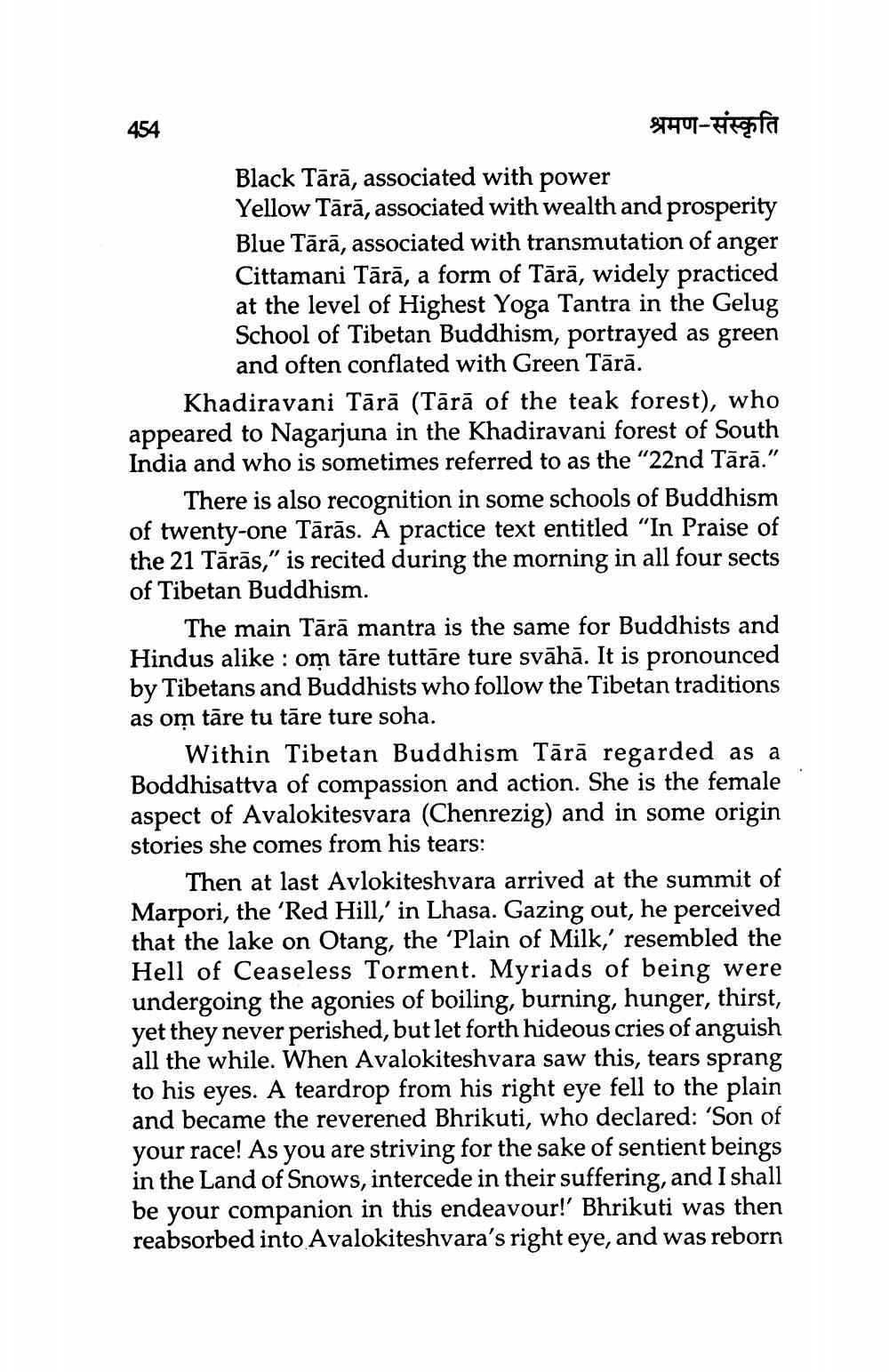________________
454
श्रमण-संस्कृति
Black Tārā, associated with power Yellow Tārā, associated with wealth and prosperity Blue Tārā, associated with transmutation of anger Cittamani Tārā, a form of Tārā, widely practiced at the level of Highest Yoga Tantra in the Gelug School of Tibetan Buddhism, portrayed as green
and often conflated with Green Tārā. Khadiravani Tārā (Tārā of the teak forest), who appeared to Nagarjuna in the Khadiravani forest of South India and who is sometimes referred to as the “22nd Tārā."
There is also recognition in some schools of Buddhism of twenty-one Tārās. A practice text entitled "In Praise of the 21 Tārās," is recited during the morning in all four sects of Tibetan Buddhism.
The main Tārā mantra is the same for Buddhists and Hindus alike : om tāre tuttāre ture svāhā. It is pronounced by Tibetans and Buddhists who follow the Tibetan traditions as om tāre tu tāre ture soha.
Within Tibetan Buddhism Tārā regarded as a Boddhisattva of compassion and action. She is the female aspect of Avalokitesvara (Chenrezig) and in some origin stories she comes from his tears:
Then at last Avlokiteshvara arrived at the summit of Marpori, the 'Red Hill,' in Lhasa. Gazing out, he perceived that the lake on Otang, the ‘Plain of Milk, resembled the Hell of Ceaseless Torment. Myriads of being were undergoing the agonies of boiling, burning, hunger, thirst, yet they never perished, but let forth hideous cries of anguish all the while. When Avalokiteshvara saw this, tears sprang to his eyes. A teardrop from his right eye fell to the plain and became the reverened Bhrikuti, who declared: 'Son of your race! As you are striving for the sake of sentient beings in the Land of Snows, intercede in their suffering, and I shall be your companion in this endeavour!' Bhrikuti was then reabsorbed into Avalokiteshvara's right eye, and was reborn




